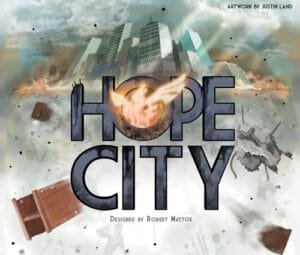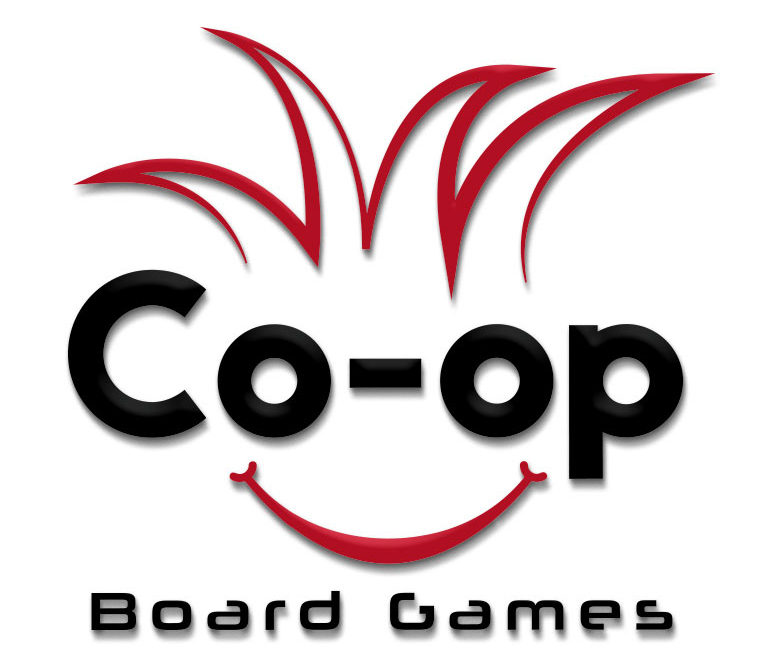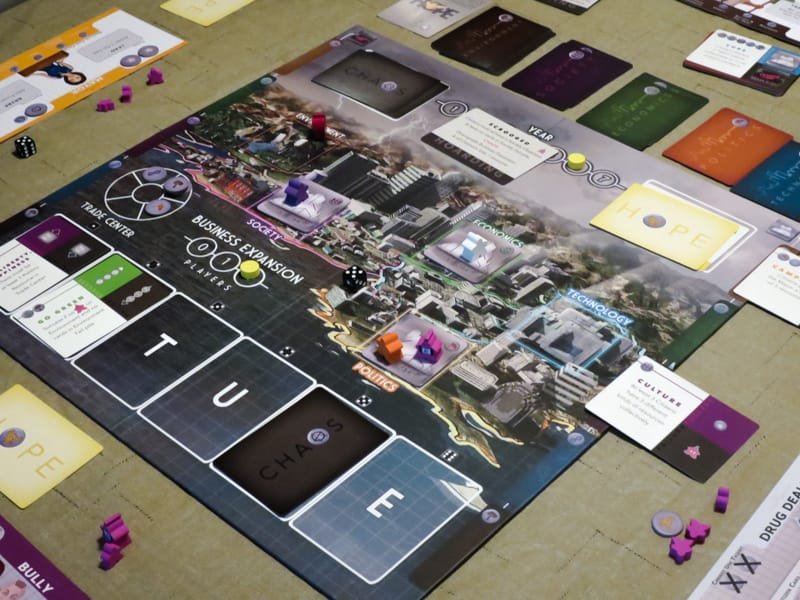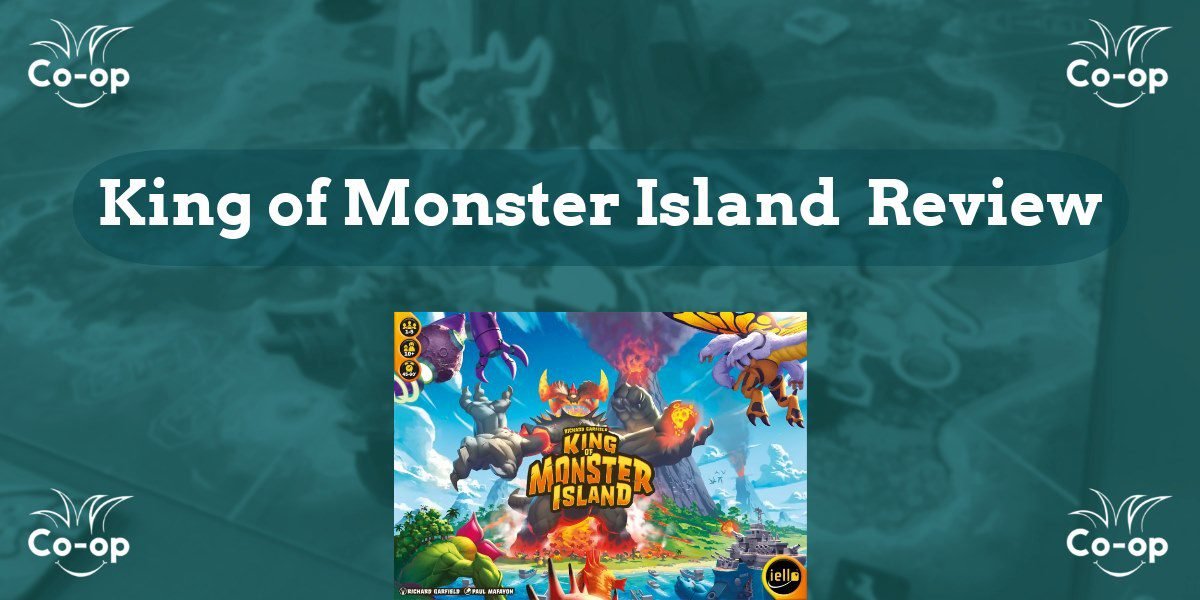
Year: 2017 | Players: 3-6 | Minutes: 45+ | Ages: 13+
This Hope City review is based on a total of six games, with at least one game played at each player count.
What is Hope City?
Hope City is a cooperative board game in which you’re trying to rebuild a city that has been taken over by corrupt leadership. As citizens, it’s your job to use your characters’ skills to shut down the city’s punks and build new City Sites within seven years.
Hope City was designed by Robert Mattox and published by Dux Nova.
Hope City Gameplay
Hope City is really all about collecting resources and using those resources to complete objectives. On each turn you’ll be collecting a resource from the Wage Bag and then choosing where you want to go to try to complete objectives.
You’ll begin each year/round by flipping over a Chaos card. These cards give you conditions you’ll need to fulfill by the end of the year. You’ll never get a reward for meeting those conditions, but failing to do so can be prettttty bad for you.
Characters have two special abilities that they can use throughout the game: Talents and Temptations. To use a Talent, you simply discard one of your Talent tokens and then take that action. When you choose to use a Talent, you can use yours or any of the characters that aren’t controlled by other players. The Temptation action is always better than the Talent action, but you’re forced to roll the corruption die each time you use it.
If you get too much corruption, you “break bad,” which makes things a bit tougher for the whole team. You don’t turn into a traitor, but you do gain a flaw and any corruption you get on your turn goes to other characters, potentially making them break bad too! Your teammates will need to complete an objective of your color to help you become good again.
There are five resource types, each of which matches one of the five objective categories and city spaces. When you land on one of the five city spaces, you’ll deal with any punks that are there and then you’ll flip over an objective card to see if you want to attempt that objective or not.
Facing punks is super-simple process but also very important. You’ll roll a die for the punks to see if you get any corruption (1 or 2 on the die is a success for the punks), and then you’ll have the option to roll a die to see if you force them out of the city (5 or 6 is a success for you). You’ll need to pay one resource to remove a punk on a successful roll.
When you attempt an objective, you’ll pay the cost in resources and then see if you met the conditions. A success will move the card over to the the Success pile, while a a failure will send it over to the Failure pile. You can also skip the objective card for now and put it on the Future Track, which gives you more options on future turns but also could create problems if the track fills up.
If you complete an objective of your color, you get a Hope card. These cards give you a one-time, potentially game-changing ability that you can use any time.
The way you cooperate in this game is by talking about each move you’re going to make and by leveling up Business Expansion. The Business Expansion shifts from Level 0 to Level 2 and it is leveled up by completing certain objectives. If you expand to Level 1 or 2, you can share resources to complete objectives with one or two other players. This is the main way to complete Major Objectives (see paragraph below).
The key to beating Hope City is having three City Sites built by the end of the seventh year. There are three ways to build a City Site: complete one of the Major Objectives (objectives that require all five resources); get a full set of five objectives in the Success Pile; or remove a full set of small and big punks from the game.
Check out our Top 10 Family Games!
Pros
- Each character definitely feels different thanks to their special abilities. You really do feel like your character’s abilities will be vital to the team’s chances at some point during the game.
- The Future Track was a fantastic idea. It gives you more options on your turn and it creates a bit more tension as the track fills up.
- Games are generally close. We’ve played six games so far and five of them went down to the wire. That tells me that this game was playtested a lot before it was published.
- The board looks great. It’s a nice, clean look that doesn’t get overly crowded even with a bunch of cards and other components on it.
Cons
- The rulebook isn’t great. This is one of those games that you need to play and check the rules as you go to figure out how everything works. You should have everything figured out after two or three games, though.
- This is not a very interesting theme… to us, at least. My groups always try to get into themes by role-playing a bit, but in this one we usually just end up calling out the colors of the resources, cards, and characters rather than saying their names. We’ve found it hard to throw ourselves into this world.
- We’re not big fans of the way the citizen cards look. The characters themselves are pretty bland looking and the cards have no background whatsoever. Even just adding in their workplaces or the city itself would have livened up the cards a bit.
Final Thoughts
Hope City is a good game mechanically, but we think it needs another theme to stand out. I honestly think this game has the potential to be a hit with a better theme. If this theme does interest you, Hope City is worth checking out since it plays differently than other cooperative board games out there and it’s a good challenge.
Hope City Links
BoardGameGeek
Thanks for taking the time to read our Hope City review! To stay updated on all things cooperative board games, follow us on Twitter, Facebook, or via RSS.






